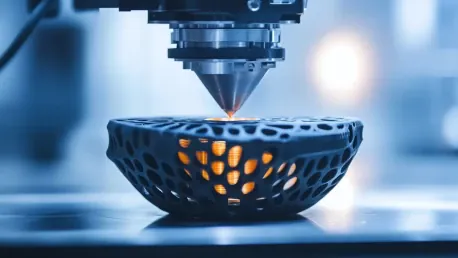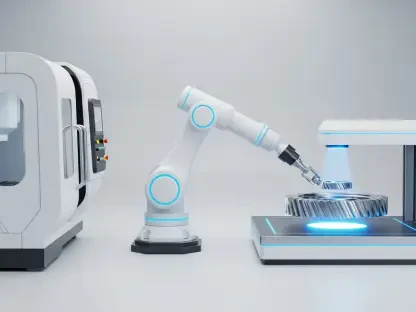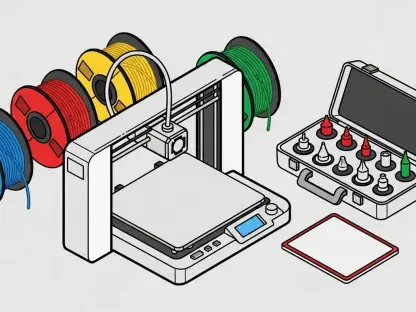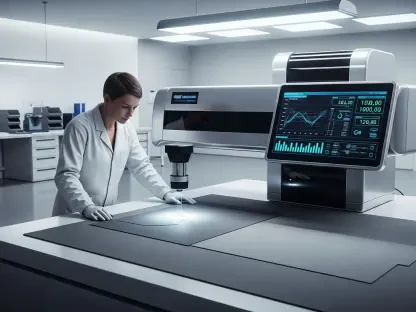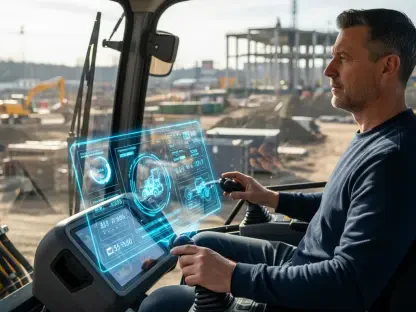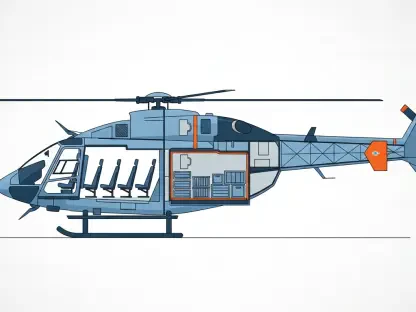In recent years, the aerospace industry has been pushing the boundaries of technology to achieve hypersonic flight capabilities. However, achieving these milestones comes with its own set of challenges, particularly in materials engineering. The extreme conditions experienced during hypersonic flight, including temperatures exceeding 2000°C and immense mechanical loads, necessitate the use of advanced materials and manufacturing processes. Among the promising advancements in this field is the development of 3D printed dark ceramics by the Purdue Applied Research Institute (PARI). This innovative approach stands to revolutionize the manufacturing of hypersonic vehicles, effectively addressing some of the most pressing challenges in the industry.
Advancements in Dark Ceramic 3D Printing
Utilizing Digital Light Processing (DLP) Technology
Led by Rodney Trice from Purdue University’s College of Engineering’s School of Materials Engineering, the research at PARI focuses on utilizing Digital Light Processing (DLP) technology. This technology is crucial for fabricating complex geometries required for hypersonic vehicles. The process involves a UV light projector to selectively solidify layers of ceramic powder and resin. This enables the creation of components with intricate designs and smooth surfaces, which are difficult to achieve with traditional manufacturing techniques. By using DLP, the researchers have successfully produced prototypes like cones and hemispheres, essential shapes for constructing hypersonic vehicles. Despite the advanced capabilities of DLP technology, the researchers encountered a significant challenge related to dark ceramic powders. These materials tend to absorb UV light rather than reflect it, resulting in inadequate curing depths and extended build times. This inefficiency posed a considerable hurdle, necessitating innovative solutions to harness the full potential of dark ceramics in hypersonic applications.
Overcoming Challenges with Resin Systems and Surface Treatments
To mitigate the issues associated with UV absorption, Trice and his team, including PhD student Matthew Thompson and ceramics research engineer Dylan Crump, have been focusing on improving the resin systems and surface treatments. Their efforts aim to enhance the curing process, ensuring better material properties and more efficient printing. After extensive research and experimentation, the team developed resin formulations and surface treatments that significantly improved the interaction between the UV light and the dark ceramic powder.
Their breakthrough allowed for improved curing depths and faster build times, advancing the overall efficiency of the 3D printing process. This development has proven pivotal in fabricating more complex and robust ceramic components, capable of enduring the harsh environments experienced during hypersonic flight. These advancements exemplify the potential of combining cutting-edge materials science with innovative manufacturing technologies to overcome previously insurmountable challenges.
Enhancing Post-Processing Techniques
Tackling Delamination and Cracking Issues
Once the 3D printing process is complete, the components undergo post-processing, a critical stage to achieve the final product’s desired mechanical properties. However, the researchers encountered issues related to delamination and cracking, especially in larger components. Delamination, where layers of material separate, and cracking can compromise the structural integrity of the components, rendering them unsuitable for hypersonic applications.
To address these challenges, the team at PARI has been developing and refining post-processing techniques. Their goal is to minimize these issues to produce durable, high-quality components. By experimenting with various methods, such as optimal heat treatments and surface finishing techniques, the researchers have made significant strides in reducing delamination and cracking. This progress is critical in ensuring that the larger components maintain their structural integrity throughout the manufacturing process and during actual hypersonic flight conditions.
Building a Foundation for Future Innovations
The research conducted at PARI extends beyond immediate applications, aiming to lay a robust foundation for future innovations in hypersonic vehicle manufacturing. Supported by the Office of the Secretary of Defense Manufacturing Science and Technology Program, in collaboration with the Naval Surface Warfare Center, Crane Division, and the National Security Technology Accelerator’s Strategic and Spectrum Missions, these efforts are a collaborative endeavor.
Unified efforts from multiple stakeholders provide a fertile ground for accelerating research and development in hypersonic technologies. By creating and streamlining processes for 3D printing dark ceramics, the team is setting the stage for significant advancements in the aerospace industry. This foundation will allow future researchers and engineers to build upon and further refine these techniques, leading to the continuous evolution of hypersonic vehicles.
Future Implications and Innovations
Potential Improvements in Efficiency and Performance
The advancements made by the PARI team, particularly in overcoming the challenges associated with 3D printing dark ceramics, hold immense potential for future improvements in the efficiency and performance of hypersonic vehicles. By developing materials and methods that can withstand extreme conditions, they are enabling the production of more reliable and high-performing vehicles. These developments could result in aircraft that can travel faster and more efficiently, with the capability to endure the rigorous conditions of hypersonic flight without compromising safety or performance.
Paving the Way for Aerospace Engineering
In recent years, the aerospace industry has been pushing technological boundaries to achieve hypersonic flight, a realm where aircraft travel at speeds exceeding five times the speed of sound. Achieving hypersonic flight poses significant challenges, especially in materials engineering. The harsh conditions of hypersonic flight, including temperatures soaring above 2000°C and massive mechanical stresses, require advanced materials and innovative manufacturing techniques. Among the most promising developments in this arena is the creation of 3D printed dark ceramics by the Purdue Applied Research Institute (PARI). This pioneering technology has the potential to transform the manufacturing process for hypersonic vehicles. By addressing critical issues in the industry, this breakthrough may facilitate the development of more efficient and reliable hypersonic flight systems. Additionally, it highlights the importance of ongoing research and collaboration in advancing aerospace capabilities to meet the demands of future travel and defense strategies.
